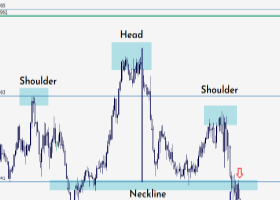Jane Foley, Research Analyst at Rabobank, suggests that there was a common theme in the words of Fed Chair Yellen and in the policy statements offered by the SNB and Norges Bank.
“All three cited weaker global growth as a reason for caution. Indeed, the slowing global economy also framed the opening remarks of the UK Chancellor yesterday in his presentation of the budget and, since it was also a focus of BoE Governor Carney’s speech to the G20 in February, it is unsurprising that the minutes show that global growth was a factor in the BoE’s March policy discussions this month.
According to Carney world growth last year was in the region of around 4%, which is less than half of the pace recorded in 2007. Slowing growth in China and in many EM economies combined with continued sluggish rates of expansion in much of the developed world explain why global growth is so slow. This, however, doesn’t address the reasons why extraordinary monetary policy settings in much of the developed world have failed to lift growth and inflation more significantly.
While central bankers often point out the necessity of structural reforms to lift underlying demand, economists are still unsure as to why demand has not bounced back alongside falling unemployment levels in major economies. The aging demographic and associated changes in the labour force, deleveraging and low levels of productivity are often cited as factors which are inhibiting the transmission of accommodative monetary policy settings into stronger demand and price pressures.
Last October the Fed’s Brainard challenged the established view that US inflation would rise as unemployment dropped. The US unemployment rate is currently at levels that in the past would be associated which much higher inflation levels. The same can be said for economies as varied as Germany, the UK and Australia. The implication is that wage data rather than the unemployment rate should be a better measure of slack in the labour market. Since wage inflation still subdued in many developed economies, central banks remain on the whole dovish and wary of downside risks that could further expose the limits of monetary policy settings.
A dovish central bank is usually associated with a softening currency. If many central banks are simultaneously dovish, the building blocks are in place for a currency war. The rapid growth rate experienced by Sweden in the final months of last year proves that a small open economy can have some success by using extraordinary monetary policies to engineer a soft exchange rate.
That said, essentially a currency war is a beggar-thy-neighbour policy that merely shifts disinflationary pressures from one region to another. We would argue that the rapid appreciation of the USD in the latter half of 2014 was a result of the Fed not partaking in currency wars. Vice Chair Fischer argued at the end of last year that USD strength had by then had a significant impact in capping both in US exports and inflation.
The market has reduced its long USD positions substantially since last spring and, by taking a more dovish tone yesterday, Fed Chair Yellen has afforded the greenback extra protection from unwanted inflows near-term. Essentially, the Fed’s dovish tone is making it far more difficult for the ECB and the BoJ to weaken their respective currencies.
Despite Yellen’s cautious outlook, we are still of the view that the recent glimmers of US price pressure will have strengthened sufficiently for the Fed to hike rates in June and again later in the year. Compared with the policies of all other G10 central banks this would be a counter-directional policy move and should lend the greenback support on a 3 mth view.”
PS: Copy signals, Trade and Earn $ on Forex4you - https://www.share4you.com/en/?affid=0fd9105



